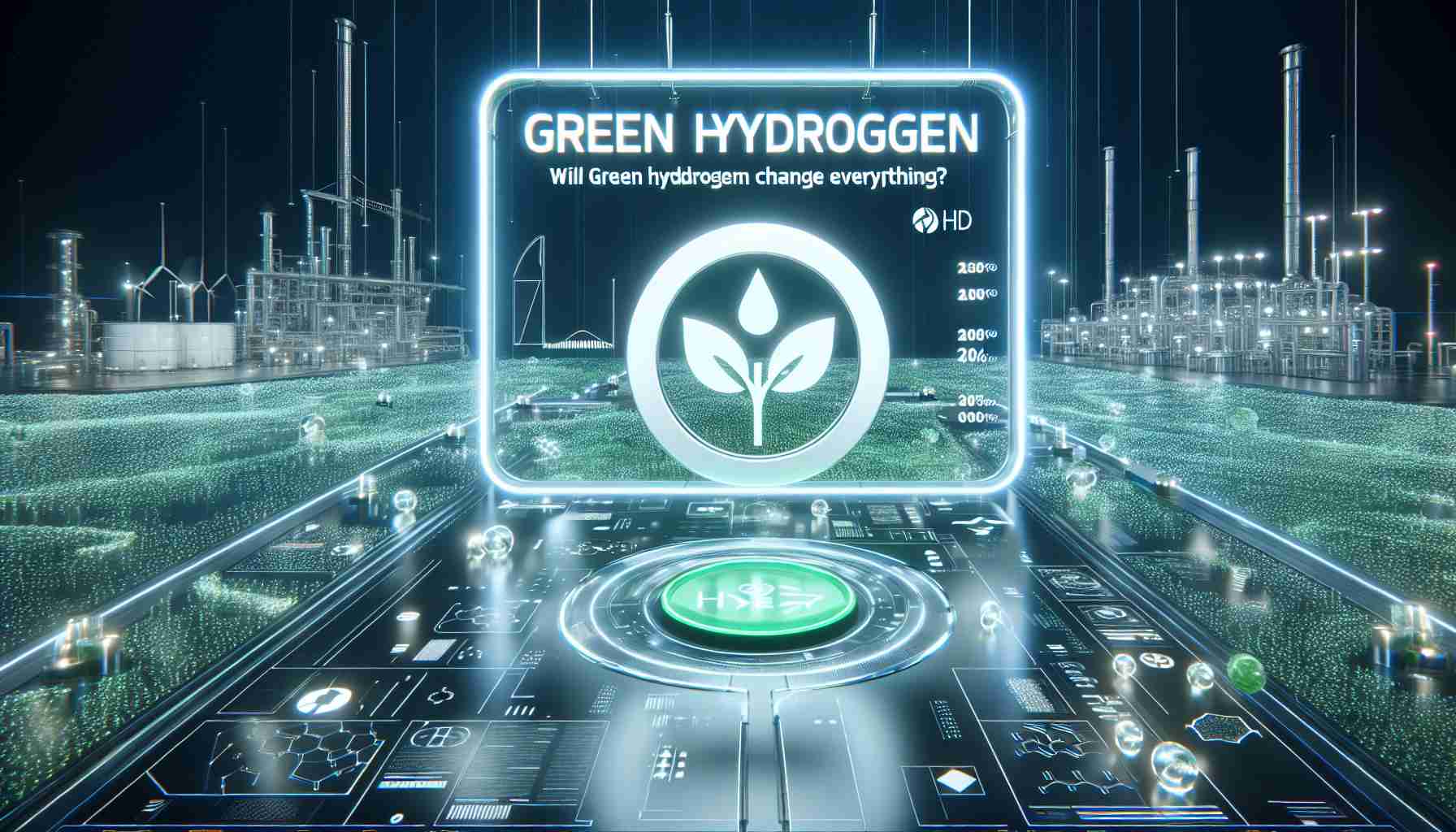An Innovative Approach to Clean Energy in Washington
The Washington State Department of Ecology has released a draft environmental impact statement that delves into the emerging world of green hydrogen production and storage. This initiative aims to educate the public about the potential environmental repercussions of these facilities as Washington shifts towards sustainable energy.
As reliance on fossil fuels diminishes, this draft statement highlights the importance of transitioning to renewable sources, such as solar and wind energy. The department’s previous studies already outlined the challenges posed by these energy generators, but now the focus is on green hydrogen, which could significantly cut greenhouse gas emissions in harder-to-decarbonize sectors like aviation and heavy transport.
The public review period opens up critical discussions about the viability and environmental considerations of green hydrogen as a clean fuel. The process of electrolysis is a key method examined, where electricity is utilized to separate water into hydrogen and oxygen, producing pure hydrogen that can be stored and transported effectively.
The study elaborates on three tiers of information: a summary for quick insights, a thorough main document assessing environmental impacts and mitigation strategies, and detailed appendices for in-depth technical analysis.
Final recommendations will be presented to the Washington State Legislature by June 30, aiming to pave the way for informed decision-making about the future of green hydrogen facilities across the state.
The Broader Implications of Green Hydrogen as a Clean Energy Alternative
The exploration of green hydrogen production in Washington not only represents a pivotal moment for local energy policy but also signals significant shifts in global energy dynamics. As countries rush to meet climate targets, the adoption of green hydrogen could play a crucial role in decarbonizing areas that have historically resisted electrification. This transition could foster a more sustainable economy, promoting green jobs in manufacturing, technology, and maintenance, potentially creating thousands of employment opportunities.
Moreover, the environmental implications of green hydrogen extend beyond reduced carbon emissions. While the focus is often on direct emissions, the use of renewable electricity for hydrogen production can minimize the environmental burden associated with traditional energy sources. Essential to this process is the careful management of water resources, as electrolysis consumes significant amounts of water. This could have either positive or negative impacts depending on local water availability and competition with agricultural needs.
Looking toward the future, the trends in hydrogen investments hint at a broader shifting paradigm in energy consumption. The expectation is that as the technology matures, green hydrogen could emerge as a global commodity, further integrating countries in a complex web of energy cooperation. The long-term significance of this transition suggests a more resilient and interconnected global economy, assigning hydrogen a central role in energy storage and distribution, akin to the rise of oil a century ago. As Washington navigates these changes, its decisions may serve as a blueprint for sustainable energy innovation worldwide.
Revolutionizing Clean Energy: Washington’s Move Towards Green Hydrogen
Introduction to Green Hydrogen in Washington
As the world increasingly focuses on sustainable energy, Washington State is taking significant steps towards innovation in clean energy production with a draft environmental impact statement released by the Washington State Department of Ecology. This new initiative centers on the production and storage of green hydrogen, which presents vast potential for reducing greenhouse gas emissions and transitioning away from fossil fuels.
Understanding Green Hydrogen
Green hydrogen is produced through a process called electrolysis, where renewable electricity splits water into hydrogen and oxygen. This method not only generates pure hydrogen but also requires minimal environmental impact when powered by renewable energy sources, such as solar and wind. Unlike conventional hydrogen production methods, which often rely on fossil fuels, green hydrogen aligns with the state’s sustainability goals.
Environmental Impact Assessment
The draft document comprises three essential tiers of information:
1. Summary: Offers quick insights into the potential impacts and benefits of green hydrogen.
2. Main Document: Provides a comprehensive assessment of environmental impacts and outlines mitigation strategies that can be adopted to minimize ecological risks.
3. Appendices: Contains detailed technical analyses supporting the findings and recommendations.
This multi-tier approach ensures a clear communication pathway for stakeholders and the public, facilitating informed discussions about the future of energy in Washington.
Public Review and Engagement
The public review period serves as a critical platform for discussions surrounding the viability and environmental implications of green hydrogen. Engaging the community allows for transparency and helps address any concerns regarding new energy initiatives. Feedback collected during this phase will be instrumental in shaping the final recommendations presented to the Washington State Legislature by June 30.
Pros and Cons of Green Hydrogen
Pros:
– Reduces Emissions: Significantly lowers greenhouse gas emissions, especially in sectors tough to decarbonize like aviation and heavy transport.
– Energy Storage: Provides an effective means of storing excess renewable energy.
– Versatile Applications: Can be utilized across various sectors, further promoting energy diversification.
Cons:
– Production Costs: Green hydrogen can be more expensive to produce than conventional methods, which may hinder large-scale implementation initially.
– Infrastructure Needs: Requires new infrastructure for production, storage, and distribution, leading to high initial investments.
– Energy Efficiency: The electrolysis process can be less energy-efficient compared to other direct renewable energy uses.
Innovations and Future Trends
As technologies continue to advance, the efficiency and cost-effectiveness of green hydrogen production are expected to improve. Innovations in electrolysis and renewable energy sources could lead to a broader adoption of green hydrogen solutions not just in Washington but globally. Additionally, as demand for clean energy grows, investments in related infrastructure and technology will likely surge.
Conclusion
Washington State’s focus on green hydrogen represents a pivotal shift towards sustainable energy practices. With the ongoing public discussions and comprehensive environmental assessments, the groundwork is being laid for the future production and utilization of green hydrogen as a cornerstone of clean energy solutions.
For more information on sustainable practices and innovations in energy, visit energy.gov.


